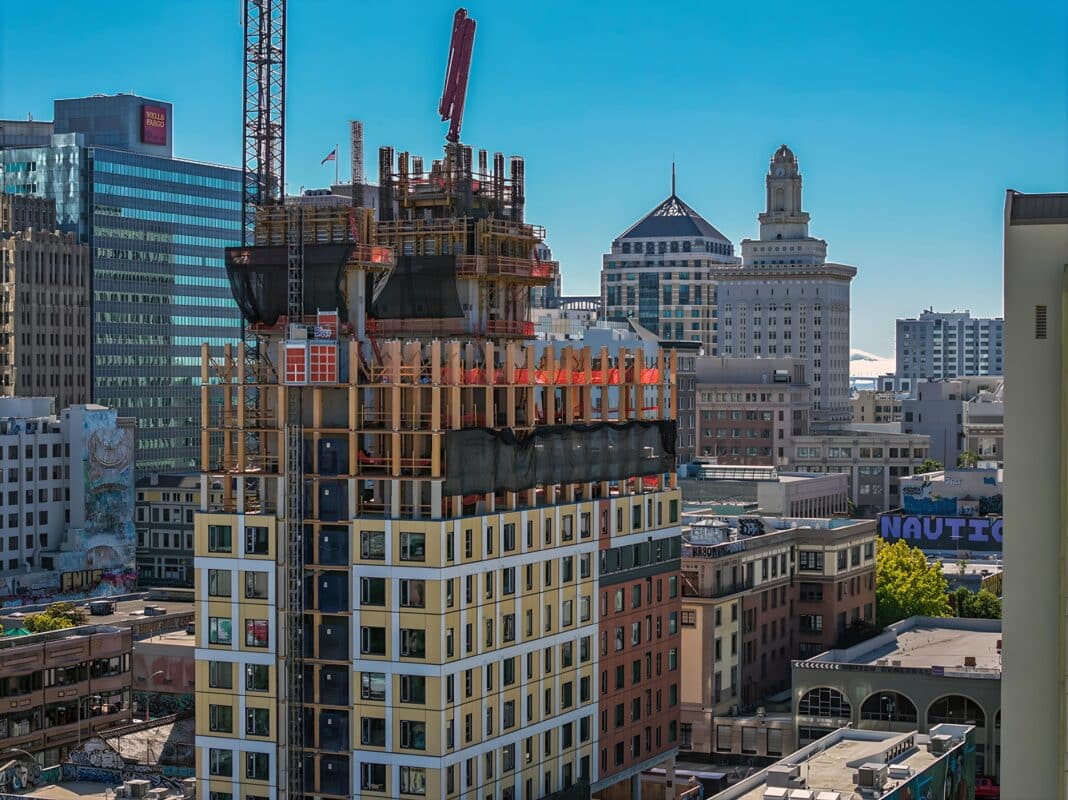Mass timber hybrid high rise is (almost) as cost-competitive as concrete-based systems, according to a new study published in Seattle overnight, which said smart prefabrication and improved material supply chains hold the key to building towers up to 18 storeys across North America and around the world.
Produced by PCL Construction, one of North America’s largest construction contractors, DCI Engineers, the engineers behind the world’s first post-and-plate mass timber high-rise, and design firm Weber Thompson, it examines the cost of mass timber construction systems and its potential to improve density in major cities.
It comes as Wood Central reports that mass timber demand across the US could grow between 25 and 40 fold, primarily fueled by hybrid high-rise construction in the American South and Pacific North West.

The study confirms that ‘intermediate high-rise’ is the sweet spot for timber-based construction systems, adding that buildings “are often underbuilt in urban areas due to an unfortunate intersection of construction code and code requirements.”
Adding that “when factoring in cost savings from the reduced schedules associated with using prefabricated mass timber, combined with an improved material supply chain, an 18-storey residential building built using a hybrid of mass timber and concrete could cost $74.45 per square foot…(compared) to $71.09 per square foot for concrete.”
“While slightly more expensive… it’s a competitive price that may influence developers to think twice about the materials they use in their next project, especially to differentiate their produce in a competitive leasing market,” the study co-authors said.
Amongst the key findings, it found that hybrid timber buildings could store up to 3,350 metric tones of CO2 across its useable life, which is “the equivalent to the carbon sequestered by 4,000 acres of US forest in one year, or eliminating 745 gasoline-powered passenger vehicles from the road.”
It also emphasises the biophilic benefits associated with timber buildings—with Hines Global Real Estate leading the charge to use timber “as a green magnet for tenants”—and the potential for smaller high-rise buildings to address the housing squeeze across the US.
Increasingly, asset managers are turning to smaller-scale “timber builds” to reduce risk across commercial, residential and industrial portfolios.
Last month, Wood Central reported that Jonathan Pearce, the Head of Investments, Office, and Life Sciences at Ivanhoé Cambridge, was pivoting away from “mega concrete projects” to smaller and more flexible timber projects to capitalise on the quick turnaround of projects.
“From a risk management perspective, this makes sense,” Mr Pearce told the International Mass Timber Conference in Portland, Oregan.
Adding that “traditionally, we would build multi-billion dollar steel projects. The problem with these projects is that we could start a project in 2012, put a shovel in 2017, finish the first stage in 2020, and start the second building that will be finished in 2025.”
“So what does that mean? It can take 15 years to finish a project,” Mr Pearce said before saying that mass timber buildings allow asset managers to play in “smaller and illiquid markets because the cheque size is so much smaller…allowing us to turn these buildings around quicker.”
- A full copy of the “Hyrid Tall Timber: Mass Timber Residential High-Rise Study” can be downloaded here from the PCL Construction website.






